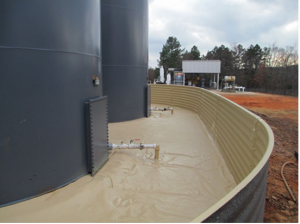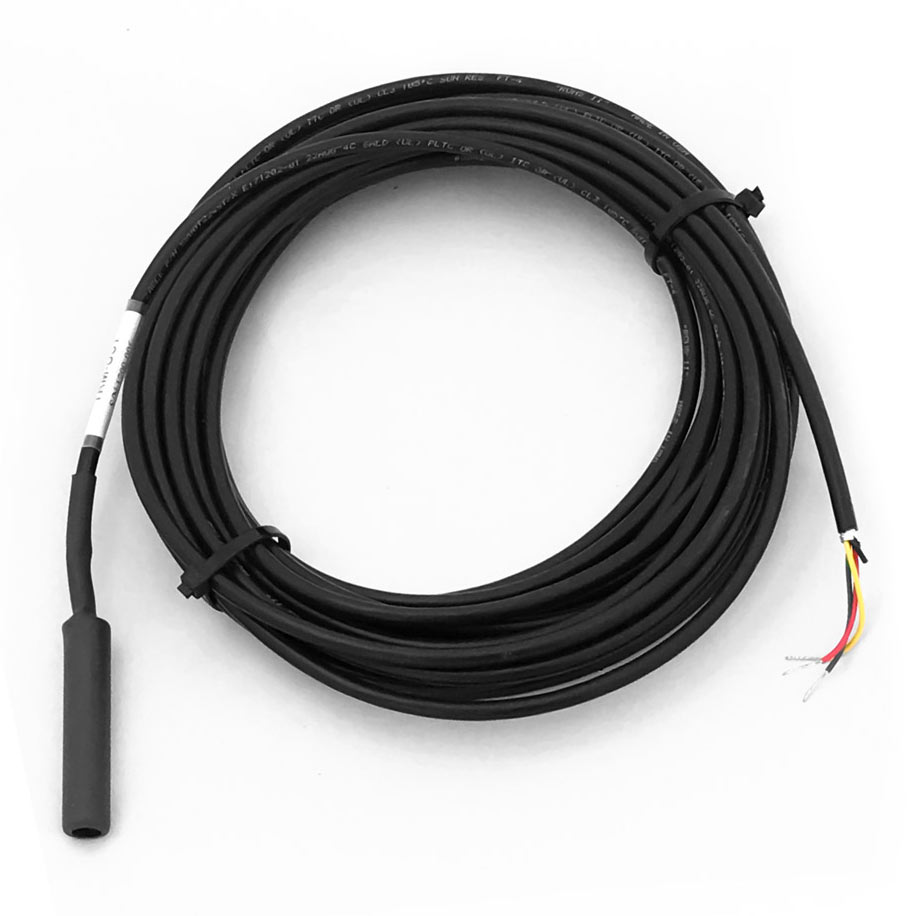Outdoor sensing of oil, fuels and hazardous fluids usually requires that the target fluid be detected in the presence of water. Storm water accumulation means that leaking oil or fuel is likely to be floating on the surface of the water of an unpredictable depth.

Containment walls trap leaking oils or fuel but also collect storm water
Oil / Fuel Detection
TRM Sensors developed vertical fuel/oil sensor probes ranging from 9” to 60” tall that are capable of detecting floating hydrocarbons regardless of water depth including completely dry conditions. The TRM-CC sensor is “hydrocarbon only” sensor designed to detect crude oil, gas condensates and refined fuels for sump, containment and vault monitoring applications. While some manufacturers designed floating platforms or sensor heads that rise and fall with the water level, TRM Sensors took a different approach and developed a sensor with no moving parts whatsoever. The entire vertical run of the sensor (with the exception of the leader cable connection section at the top) will detect hydrocarbons while ignoring rain water or melted snow. No moving parts means less concern about mud or dirt blocking a moving float.
Brine Detection
For oil field applications, hydrocarbons are not the only concern. Many wells produce as much or more toxic water as they do crude oil. Naturally occurring oil field brine and the produced water resulting from fracking is considered hazardous. Separator tanks, and holding tanks for crude oil and for brine are a common structures in oil fields. The brine accumulation at the bottom of these tanks is corrosive and attacks the steel plates eventually leading to leaks beneath the tank floor. The initial leakage is likely to be brine rather than crude oil. TRM Sensors designed TRM-HX to detect brine while ignoring surface water from rain, snow melt or condensation. Horizontally drilled drain tubes collect liquids leaking from the tank, channel leaking fluids to a collection sump on the perimeter where a combination of TRM-CC and TRM-HX send an alarm if the collection fluids are crude oil, gas condensates or brine…all the while ignoring rain, snow melt or condensation.
Underground Storage Tank (UST) Monitoring
Building on the “combination” oil/brine sensor technology, TRM Sensors was able to further develop the concept to create a very small fuel/water sensor for underground tanks. For the UST application, any water or fuel in the interstitial space is an indication of inner or outer tank failure. While there are multiple methods to monitor double wall USTs, TRM Sensors TRM-UST brings a unique combination of small size, corrosion resistance and passive solid state reliability. There are no moving parts or active electronics.

Small size permits insertion into narrow interstitial space between inner and outer tank
Hazardous Fluid Detection
The capability of TRM-Easy5-Relay-U and the TRM-HX probes provides the capability to monitor for leakage of corrosive hazardous fluids. Acids, bases and many chemical supply and waste streams are far more conductive than rain water. The “brine” circuit initially developed for oil field applications, has been exploited for TRM-HX acid and hazardous fluid sensors. In one application the TRM-HX was installed to monitor waste acid (4% HCl) piping at a steel mill. The piping trench was subject to periodic flooding from rain water with the surface run-off likely to contain low concentrations of various pollutants. By installing TRM-HX and TRM-Easy5-Relay-U, the user was able to ignore rain water with its ‘acceptable’ contaminants, while still detecting the target waste acid stream. Previously installed float switches were abandoned due to too many false alarms.
Keep in mind these other Outdoor Applications:
- Well head cellar monitoring
- Valve pit monitoring
- Pump pad monitoring
- Utility trenches
- Buried flanges
